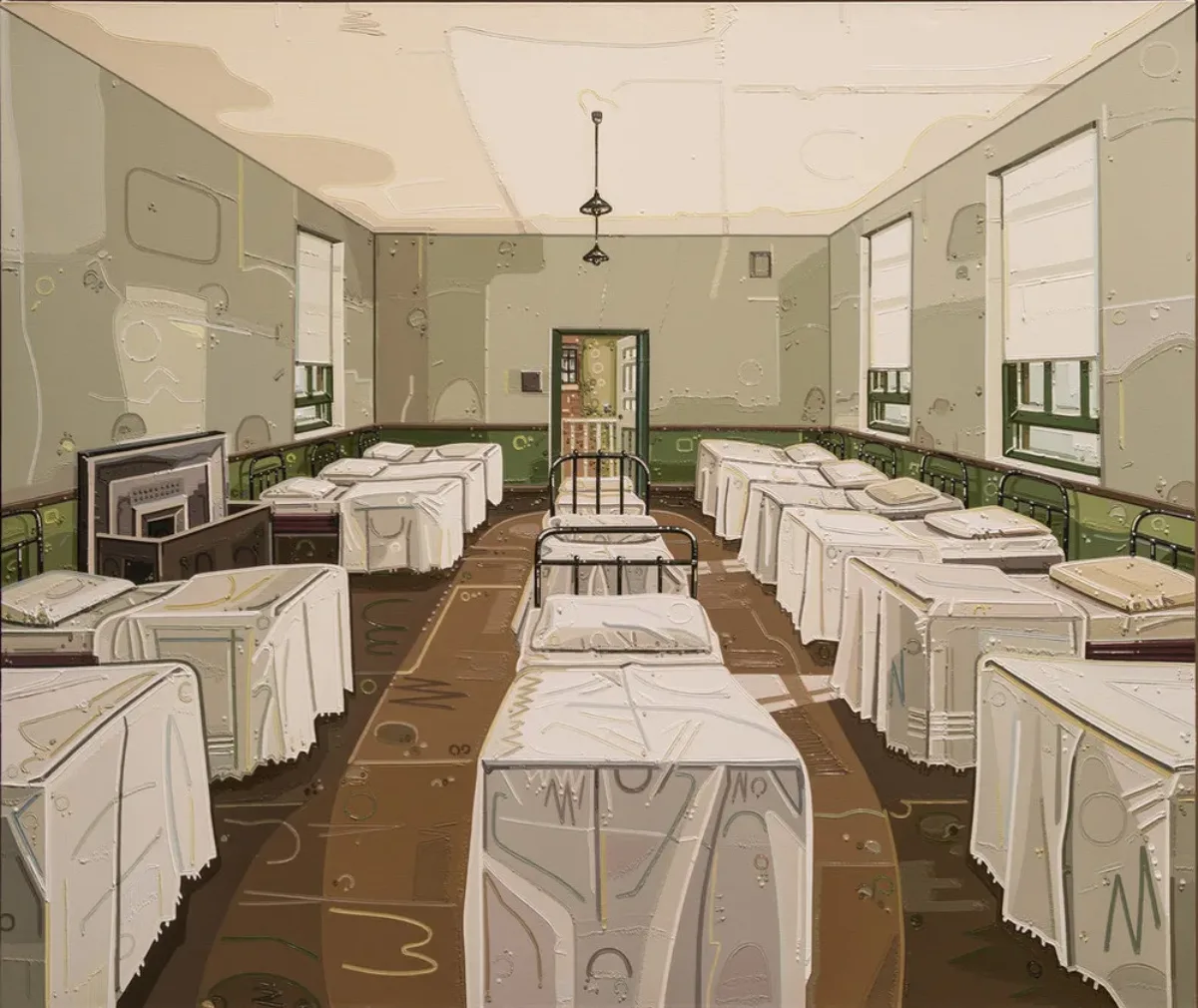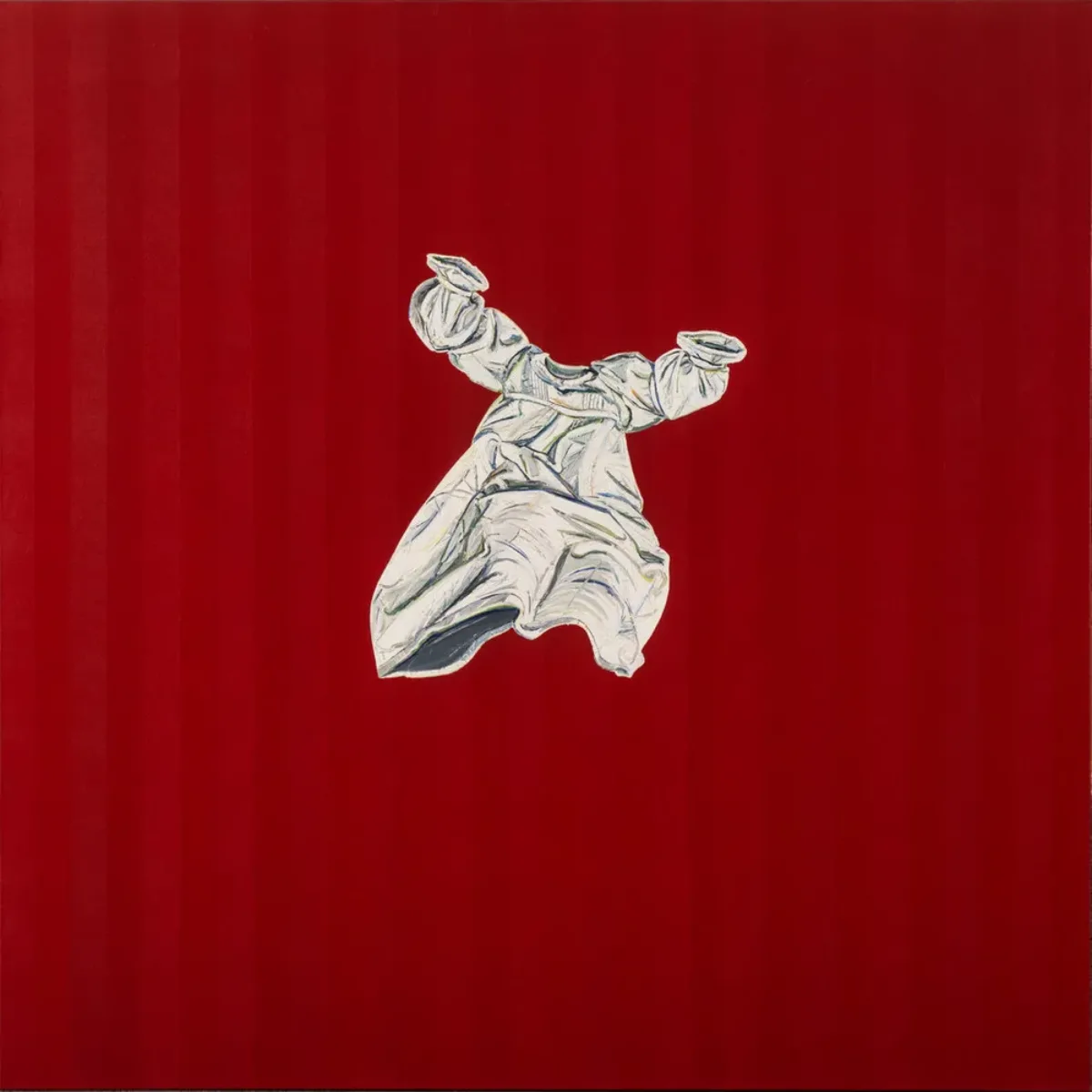Julie Roberts
Along with other British artists of her generation, Roberts considers grand themes of power, death, and sexuality, but her approach is more analytical and nuanced. Paintings from the early 1990s reflect her interest in writings by French philosopher Michel Foucault, whose texts center on authority and repression. By isolating depictions of gynecological couches, operating tables, stretchers, and restraining jackets against monochromatic backgrounds, Roberts alludes to institutional control over the body. The otherworldly quality of the images also recalls early twentieth-century movements such as Surrealism.
After 1995, when Roberts was the first artist to a hold a Scottish Arts Council scholarship at the British School at Rome, she focused on historical characters—in particular, Victorian-era individuals associated with the human body and psyche. She created an expansive series of images centered on Charles Darwin, Sigmund Freud, and the figure known as Jack the Ripper. Roberts has based more recent works on her research into the displacement of children in Europe during World War II and the more detached notions of childhood and family prevalent in that period.
The artist’s highly expressive, stylized paint application suggests intense and tender engagement with her subjects. Her drawings, prints, and paintings also often feature graphic circles and lines that form distinctive patterns within the images.

